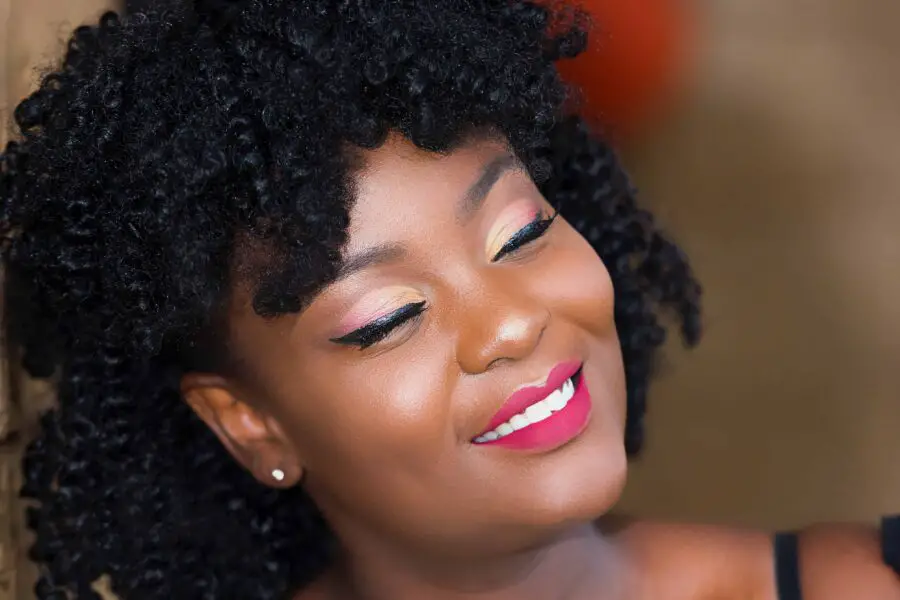Last Updated on April 23, 2025 by Doris Jean
What is low porosity natural hair? Low porosity natural hair means that your hair naturally has a structure that makes it very difficult to absorb moisture and water into your hair shaft.
This means that when you are washing your hair, it can be difficult for your entire hair to be saturated with water, making washing it difficult, and hydrating it very hard.
Having low porosity hair can also mean that it will be more difficult for your hair to absorb oils, so even if you use some hydrating treatments and hair oils, it may not make much of a difference.

On the bright side, low porosity hair that can absorb moisture is the best at retaining it, meaning you can have very healthy low porosity hair, provided you can work out how to get it to absorb moisture.
All hair is arranged in a pattern that contains three layers. These are the cuticle, the cortex, and the medulla.
The cuticle is the important layer here. It is the very outer layer of your strands of hair. They are individual cuticles that overlap, and under a microscope, they look very similar to roof tiling.
On low porosity hair, these cuticles are overlapped so tightly that there are no spaces between them for water, oils, and treatments to penetrate it.
Typically, low porosity natural hair is a result of genetic factors, meaning some people are more susceptible to it than others. It is not usually down to heat and chemicals being used on your hair, contrary to popular belief.
If you have low porosity hair you may find that washing and drying your hair takes longer.
Air Drying is likely to take a very long time, and even if you use a hairdryer or form of heat to dry it, it can still take far longer than it would for anyone with medium or high porosity hair.
You may also find that products tend to just sit on top of the hair and do not really seem to penetrate it. Your hair will not easily absorb products, oils, and water. As well as this, your hair may feel very dry to the touch.
You May Like: Hair Porosity Series
How do you fix low porosity hair?
The fix for low porosity hair would be to somehow improve the overall porosity of your hair. Based on what we told you about hair porosity in the previous section, we are sure that you will agree that it sounds like a next to impossible job.
As you know, the cuticles of the hair are what determine porosity, and since low porosity hair has cuticles that are naturally tightly bonded together, it can be difficult to change this.
The reason for this is because your hair is naturally that way. It is in your genetics for your hair to behave in that way.
That being said, there are several things that you can do to help your hair feel more moisturized and hydrated. It will not necessarily change the genetic makeup of your hair but will help your hair to look and feel better.
The great thing about low porosity hair is that while it can be very difficult to hydrate and moisturize, once any form of moisture has entered into the hair, it is very hard for it to be released.
This can result in healthy-looking and feeling hair. You just need to work out how to get your hair to that stage, to begin with.

You could try using hair oil before you shampoo. You can use a specifically designed oil, or just use coconut oil. Coconut oil has been thought to be great at penetrating the cuticles of your hair and remaining in the hair structure, helping it to retain moisture.
Some people with low porosity hair also find that using a deep conditioning treatment with added protein is very beneficial. The reason for this is because protein can help to retain moisture.
Since protein is made up of a chain of amino acids, they can be broken down through hydrolyzation. These hydrolyzed particles can then bond to your hair to strengthen the strands and retain moisture.
As such, any protein treatments that you use should be hydrolyzed. You can get hydrolyzed rice and wheat protein conditioners. Remember, only use these once or twice a month, and follow them up with a very moisturizing and deep conditioning treatment, too.
Ingredients to Avoid for Low Porosity Hair
If you have low porosity hair, some ingredients should be avoided as they may worsen your hair’s condition. These include, but are not limited to different types of silicones such as dimethicone, Cyclomethicone, and others.
The reason for this is because they weigh the hair down, but will not get absorbed, rather they sit on top of the hair and cause build-up. You should also avoid any petroleum-containing products, as well as mineral oils.
It is also wise to avoid using sulfates in your hair. One of the main ingredients to avoid is SLS (Sodium Lauryl/Laureth Sulfate). This is a cleansing agent that helps to foam up shampoos and soaps. However, it is notoriously drying and bad for low porosity hair.
Some low porosity hair oils to avoid are castor oil and olive oil. These oils are very heavy and would have a hard time penetrating the hair shaft.
You should, however, use some of the following ingredients in abundance. Ensure that your hair products include at least one of these ingredients, listed in the first five ingredients on the bottle.
Honey, aloe vera, flaxseed, and glycerin are all very beneficial to low porosity hair and act as natural humectants to help moisturize and strengthen hair.
What are the Best Oils for Low Porosity Hair?
Best Oils for the Low Porosity Hair:
- Sesame Seed Oil
- Rosehip Oil
- Argan oil
- Grapeseed Oil
- Jojoba oil
- Sweet Almond Oil
- Pomegranate Oil
- Apricot oil
- Sunflower seed oil
- Avocado Oil
Products for Low Porosity Natural Hair
This list also includes Best Drugstore Products for Low Porosity Hair:
Does low porosity hair break easily?
Low porosity hair can be more prone to breakages than normally porous hair. However, this depends on the individual and how the hair is looked after.
If the low porosity hair has ample amounts of protein and is hydrated, then breakages are rare. However, if there is too much or too little protein then breakages can be common.
As we have mentioned, low porosity hair sometimes struggles to absorb moisture. If this happens, it has no moisture to retain, resulting in very dry, brittle hair. This can then cause breakages.














Leave a Comment